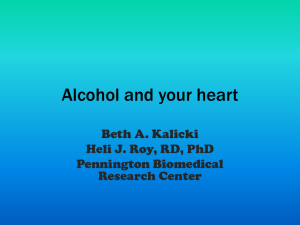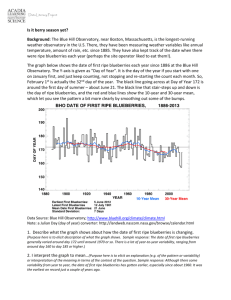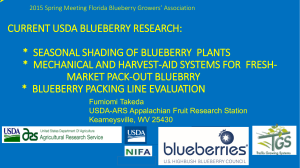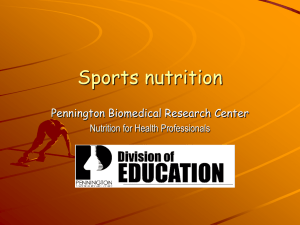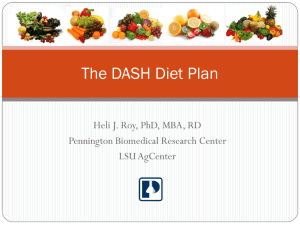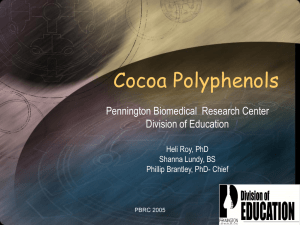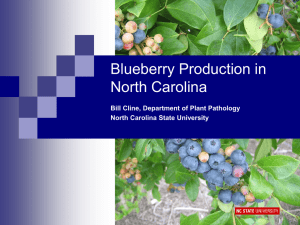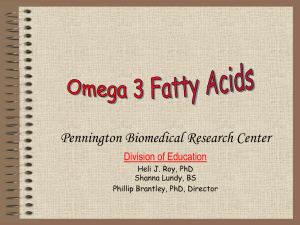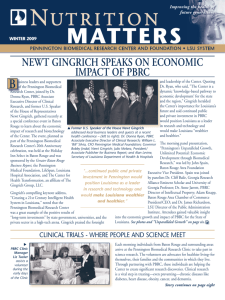Blueberries - Pennington Biomedical Research Center
advertisement
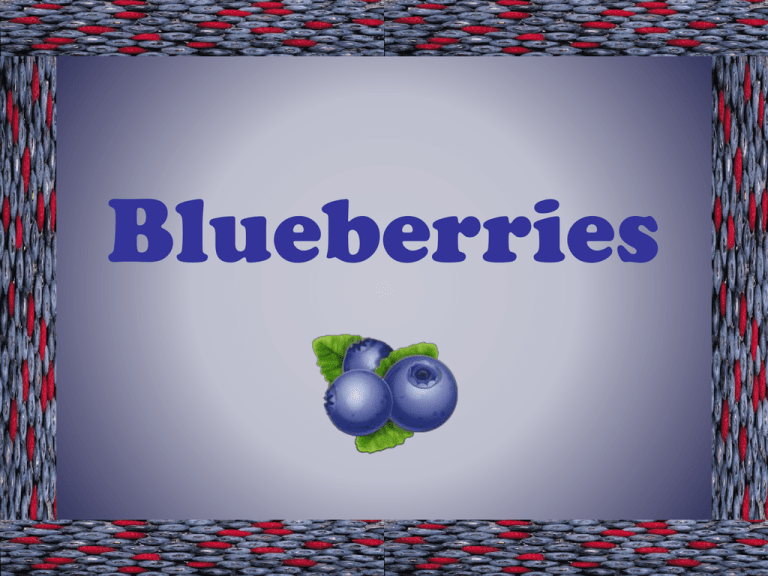
Blueberries True Blue Facts Genus Vaccinium, section Cyanoccus. Blueberries have many health benefits. Blueberries have antioxidant compounds that may delay chronic diseases. Blueberries are eaten fresh and are used in cooking. PBRC 2011 True Blue Facts Cont’d Blueberries are related to cranberries, bilberries, and cowberries. Blueberries are both cultivated and picked wild. PBRC 2011 Research • Blueberries have the highest concentration of antioxidants. • Reduce the markers of oxidative stress in chronic smokers. • Are beneficial in inhibiting oral, breast, colon and prostate cancers. PBRC 2011 What’s Healthy about Blueberries? The health benefits of blueberries are believed to be due to the many phytochemicals that act as: • Antioxidants • Anti-cancer agents • Anti-neurodegenerative agents • Anti-inflammatory agents Blueberries are low in calories and fat, they are a good source of fiber, Vitamin K and Manganese and an excellent source of vitamin C. PBRC 2011 What are Phytochemicals? Phytochemicals are naturally-occurring non-nutritive constituents of fruits and vegetables. PBRC 2011 Use and Popularity • • • • • PBRC 2011 Jellies and jams Pies and dessert Baking Dried as snacks Juice and juice blends Cancer Risk Cancers related to blueberry intake include oral, breast, colon and prostate cancers. Studies show that blueberry extract inhibits the growth of human oral, breast, colon and prostate tumor cell lines that is concentration dependent. Greater concentration is more effective. Out of 10 different extracts of fruits and berries, blueberry extract had the greatest effects on colon cancer cells. PBRC 2011 Heart Disease Risk Consuming one cup of blueberries a day for three weeks can result in reduction of heart disease risk factors. A single dose of berries is not effective. PBRC 2011 Alzheimer’s Risk • The development of neurodegenerative diseases, such as Alzheimer's disease may be reduced with blueberry intake. • This may be due to the colorful compounds in blueberries called anthocyanins that can enter the brain. PBRC 2011 GI Health Many compounds in berries have been found to inhibit the growth of several intestinal pathogens, such as Salmonella, Staphylococcus and Helicobacter pylori. Blueberry extracts also increased the susceptibility of H. pylori to clarithromycin, a medication used for the treatment of ulcers. PBRC 2011 Mission: To promote healthier lives through research and education in nutrition and preventive medicine. Authors: Beth Kalicki Heli Roy, PhD, RD Division of Education Pennington Biomedical Research Center The Pennington Center has several research areas, including: Clinical Obesity Research Experimental Obesity Functional Foods Health and Performance Enhancement Nutrition and Chronic Diseases Nutrition and the Brain Dementia, Alzheimer’s and healthy aging Diet, exercise, weight loss and weight loss maintenance The research fostered in these areas can have a profound impact on healthy living and on the prevention of common chronic diseases, such as heart disease, cancer, diabetes, hypertension and osteoporosis. The Division of Education provides education and information to the scientific community and the public about research findings, training programs and research areas, and coordinates educational events for the public on various health issues. We invite people of all ages and backgrounds to participate in the exciting research studies being conducted at the Pennington Center in Baton Rouge, Louisiana. If you would like to take part, visit the clinical trials web page at www.pbrc.edu or call (225) 763-3000. PBRC 2011

